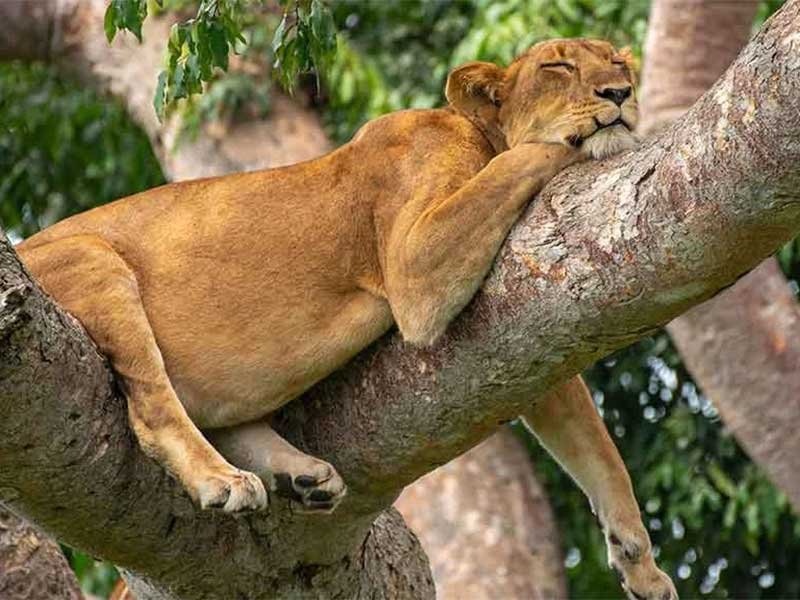
Queen Elizabeth National Park, located in southwestern Uganda, is one of the most iconic and visited national parks in East Africa. It spans approximately 1,978 square kilometers and is part of the greater Albertine Rift Valley, a biodiversity hotspot. The park was originally established in 1952 as Kazinga National Park. However, it was renamed two years later in 1954 in honor of Queen Elizabeth II following her visit to Uganda.
The establishment of the park was a significant event in the conservation history of Uganda, as it was created to protect wildlife and habitats that were under threat from human activities such as hunting and land clearance for agriculture. Historically, the area where the park now stands was home to various communities, including the Bakonzo, Basongora, and Banyankole peoples, who had lived there for centuries, coexisting with the wildlife. These communities were later relocated when the park was established, although some pastoralist activities continued in specific buffer zones.
The park has experienced several challenges since its inception, including poaching, political instability, and conflicts over land use. During the political turmoil of the 1970s and 1980s, wildlife populations in the park dramatically declined due to increased poaching, especially for elephants and other large mammals. However, since the restoration of political stability in the 1990s, concerted conservation efforts by the Uganda Wildlife Authority (UWA) and other organizations have helped revive the park’s wildlife populations and improve its infrastructure, making it a key tourism destination once again.
Geography and Landscape
Queen Elizabeth National Park is renowned for its stunning landscapes, which are as diverse as its wildlife. It stretches from the foothills of the Rwenzori Mountains in the north to the shores of Lake Edward in the south, bordered by the Democratic Republic of Congo (DRC) to the west. The park lies within the Western Rift Valley (also known as the Albertine Rift), which is characterized by its volcanic craters, rolling savannah plains, wetlands, and lush forests. The most striking feature of the park’s geography is the Kazinga Channel, a 32-kilometer natural waterway that connects Lake George to Lake Edward. The channel is a focal point for wildlife viewing and is one of the best places in Africa to see hippos and a wide variety of bird species.
Another notable geographical feature is the Katwe explosion craters, a collection of crater lakes formed by ancient volcanic activity. The craters are dotted across the northern section of the park, providing dramatic views of the surrounding landscape. The park also includes the Maramagambo Forest, one of the largest tropical forests in Uganda, which provides a habitat for primates, birds, and other wildlife.
Unique Flora and Fauna
Queen Elizabeth National Park is celebrated for its incredible biodiversity. The park is home to over 95 species of mammals, including the famous “Big Five” (lion, leopard, elephant, buffalo, and rhinoceros, though rhinos are rarely seen). Among these are the tree-climbing lions of the Ishasha sector, one of the park’s most famous and unique attractions. These lions are known for their unusual behavior of lounging in the branches of large fig trees, a trait seen in very few other lion populations in Africa.
The park’s elephant population, once decimated by poaching, has made a significant recovery in recent years. Elephants can often be seen around the Kazinga Channel and in the savannah plains, particularly during the dry season when water sources are scarce. Large herds of buffalo also roam the park, and they are a common sight during game drives.
One of the park’s most unique species is the Uganda kob, a type of antelope that is the national symbol of Uganda. These elegant animals are frequently seen grazing in the open grasslands, often accompanied by other herbivores such as topi, waterbuck, and bushbuck. The park is also home to the rare and elusive giant forest hog, the largest species of wild pig in the world.
Primates are well-represented in the park, with chimpanzees being the most notable species. The Kyambura Gorge, a dramatic ravine located in the northeastern section of the park, is one of the best places to track chimpanzees. The gorge is a lush, forested area that contrasts sharply with the surrounding savannah, and it provides a habitat for a variety of primates, including black-and-white colobus monkeys, red-tailed monkeys, and vervet monkeys.
Queen Elizabeth National Park is also a birdwatcher’s paradise. With over 600 species of birds recorded, it is one of the richest birding destinations in Africa. The Kazinga Channel and its adjacent wetlands are particularly important for water birds, including African fish eagles, pelicans, storks, and kingfishers. Migratory species such as flamingos are also frequent visitors, especially to the saline crater lakes like Lake Katwe, where large flocks can be seen during the migratory season.
Activities in the Park
Queen Elizabeth National Park offers a wide range of activities for visitors, making it a popular destination for nature lovers, photographers, and adventure enthusiasts. Some of the main activities include:
Game Drives: Game drives are the most popular way to explore the park’s diverse habitats and wildlife. These guided drives, usually conducted in the early morning or late afternoon, provide the opportunity to see large mammals such as elephants, lions, leopards, and buffalo in their natural environment. The Ishasha sector, famous for its tree-climbing lions, is a must-visit for those seeking a unique safari experience.
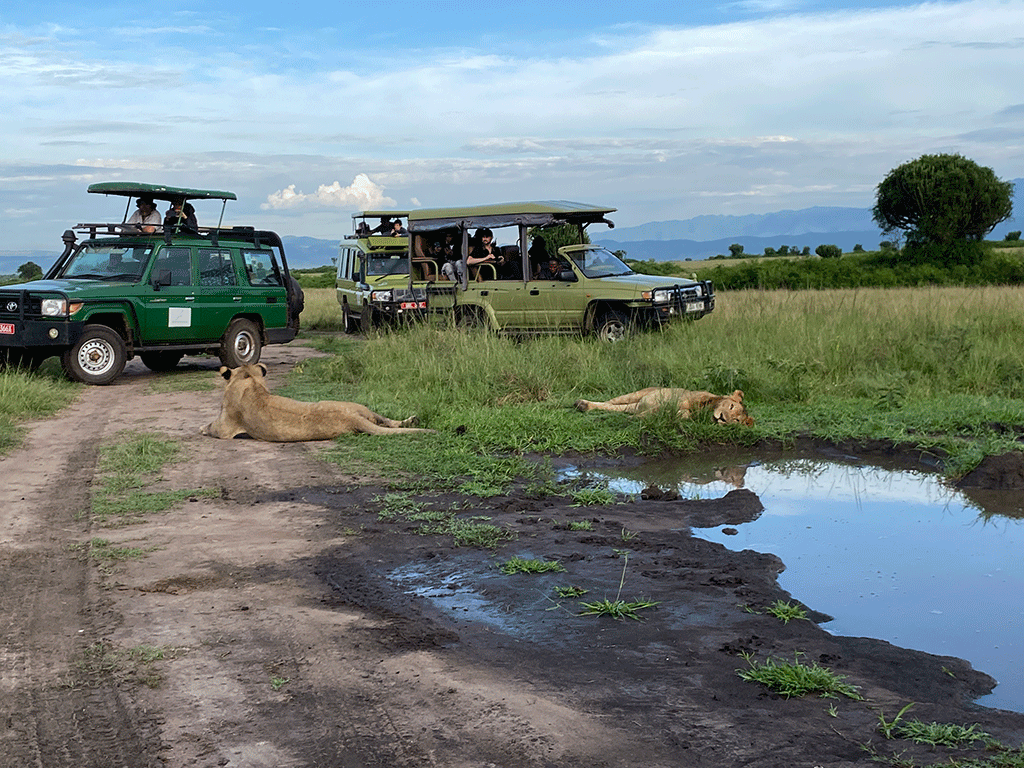
Boat Safaris: A boat safari along the Kazinga Channel is one of the highlights of any visit to Queen Elizabeth National Park. The channel is teeming with wildlife, including hippos, crocodiles, and numerous bird species. Boat safaris offer a unique perspective on the park’s wildlife and are a great way to observe animals up close as they come to the water’s edge to drink or bathe.
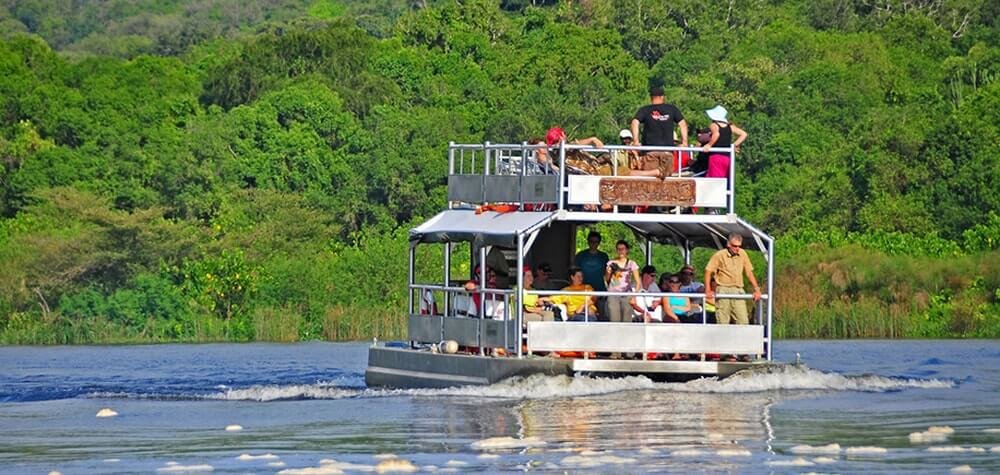
Chimpanzee Tracking: The Kyambura Gorge is one of the few places in Uganda where visitors can track wild chimpanzees. This activity involves a guided trek through the forested gorge, where visitors can observe these intelligent primates in their natural habitat. While sightings are not guaranteed, the trek is a rewarding experience that offers insight into the behavior and social structure of chimpanzees.
Birdwatching: With over 600 species of birds, Queen Elizabeth National Park is a haven for birdwatchers. The park’s diverse habitats, including wetlands, forests, and grasslands, support a wide variety of bird species. Popular birdwatching spots include the Kazinga Channel, the Mweya Peninsula, and the crater lakes. Some of the notable species include the African skimmer, saddle-billed stork, and shoebill stork.
Nature Walks: Guided nature walks are available in several areas of the park, including the Maramagambo Forest and the Mweya Peninsula. These walks offer a more intimate experience of the park’s flora and fauna, allowing visitors to explore areas that are not accessible by vehicle. In the Maramagambo Forest, visitors can also explore bat caves, where large colonies of fruit bats can be observed.
Cultural Tours: The park is surrounded by various local communities, and cultural tours provide an opportunity to learn about the traditions and way of life of the people who live in this region. Visitors can tour the salt mines at Lake Katwe, where salt has been extracted using traditional methods for centuries, or visit local homesteads to experience traditional music, dance, and crafts.
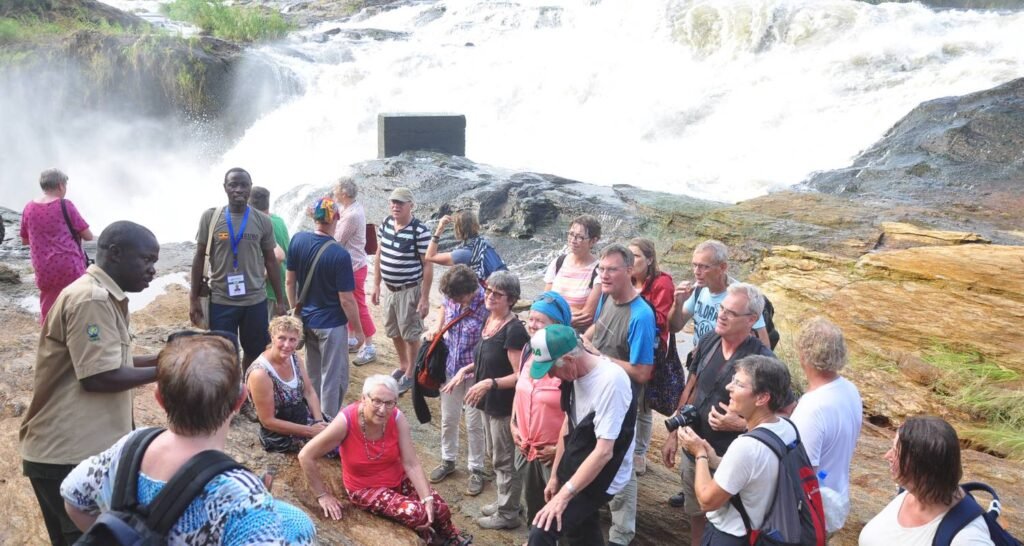
Crater Lake Exploration: The park is dotted with numerous volcanic crater lakes, each with its own unique characteristics. Some of these lakes, such as Lake Katwe, are highly saline and support only limited wildlife, while others are freshwater lakes that provide important habitats for birds and other animals. Exploring these crater lakes offers a fascinating insight into the park’s geological history.
Favourable Time to Visit
Queen Elizabeth National Park is a year-round destination, but the best time to visit depends on what activities you are interested in. The park has two distinct seasons: the dry season and the wet season.
Dry Season (June to September, December to February): The dry season is the most popular time to visit the park, as wildlife is easier to spot due to the reduced vegetation and the animals’ tendency to congregate around water sources. This is the best time for game drives and boat safaris. The weather is also more pleasant, with lower humidity and cooler temperatures, making it ideal for outdoor activities.
Wet Season (March to May, October to November): While the wet season is less popular with tourists, it offers its own advantages. The park’s scenery is lush and green during this time, and birdwatching is particularly rewarding, as migratory birds are present. However, wildlife viewing can be more challenging, as the animals are more dispersed and the roads can become muddy and difficult to navigate.
For chimpanzee tracking, the dry season is generally preferred, as the forest trails are easier to walk, and the chimpanzees are more likely to be found at lower elevations where they are easier to observe. However, the wet season can also be a good time for tracking, as the chimpanzees tend to stay closer to the forest floor in search of food.

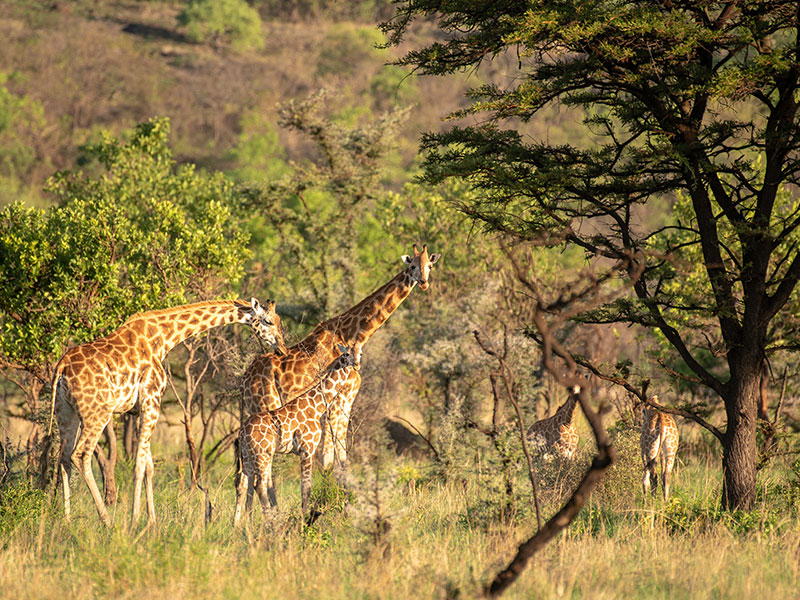
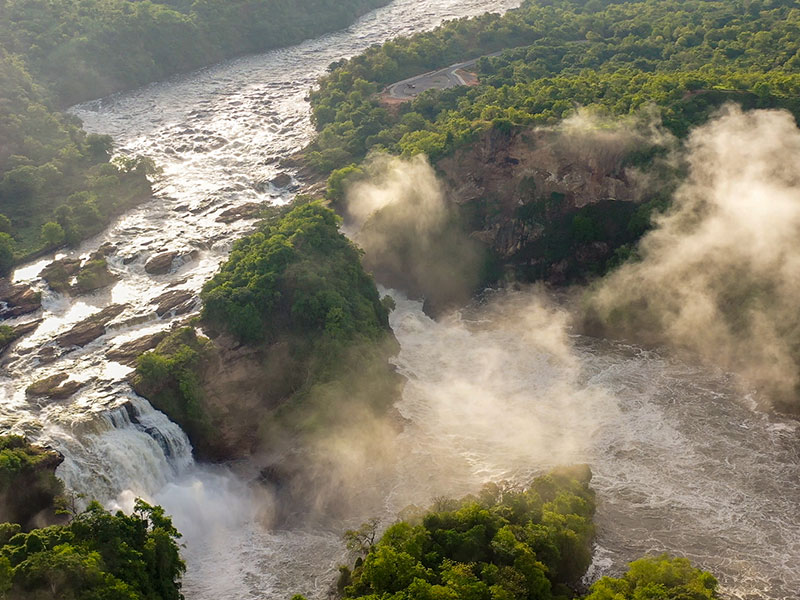









1 Comment
Seraphine Kavuma
September 17, 2024 at 5:54 pmWow. There’s more Geography and wildlife to be explored in this park…